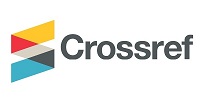The Evaluation of AR Mobile App as a Learning Media for Children
Adhistya Erna Permanasari(1*), Indriana Hidayah(2), Faizal M. Priyowibowo(3), M. Arifin Hidayat(4), Fachrul Budi Prayoga(5), Intan Sulistyaningrum Sakkinah(6)
(1) Universitas Gadjah Mada
(2) Universitas Gadjah Mada
(3) Universitas Gadjah Mada
(4) Universitas Gadjah Mada
(5) Universitas Gadjah Mada
(6) Universitas Gadjah Mada
(*) Corresponding Author
Abstract
A user evaluation stage is an integral part of designing an application. A practical evaluation can provide an overview of the problems that arise in the application and improve the user experience. The Kupuku application is an augmented reality (AR)-based game application for learning about butterflies. The Kupuku application is specifically intended for children aged 6-13 years. The user sample was selected using a purposive sampling method with the criteria for users of elementary school-age children for the child user segment and their companions as the adult user segment. This study aims to evaluate the usability of the Kupuku game application to users. User evaluation was carried out to measure the application’s usability. The evaluation process was conducted on two user segments, namely 20 child users and 16 adult users. Assessment of children employed the Fun Toolkit and usability factor-based question - Nielsen method. The obtained results showed positive feedbacks. In contrast, the assessment for adult users utilized the system usability scale (SUS) and the user experience questionnaire (UEQ). The SUS score of 76 was included in the good category, and the UEQ score produced an excellent average. The test results indicate that this application can be accepted by users, both children, and adults.
Keywords
Full Text:
PDFReferences
A. Kaya, R. Ozturk, and C. Altin Gumussoy, “Usability Measurement of Mobile Applications with System Usability Scale (SUS),” in Industrial Engineering in the Big Data Era, F. Calisir, E. Cevikcan, and H.C. Akdag, Eds., New York, USA:Springer International Publishing, 2019, pp. 389-400.
R. Alturki and V. Gay, “Usability Testing of Fitness Mobile Application: Methodology and Quantitative Results,” 7th International Conference on Computer Science, Engineering & Applications, 2017, pp. 97-114.
J.C. Read, “Validating the Fun Toolkit: An Instrument for Measuring Children’s Opinions of Technology,” Cognition, Technology & Work, Vol. 10, No. 2, pp. 119-128, Apr. 2008.
Z. Sharfina and H.B. Santoso, “An Indonesian Adaptation of the System Usability Scale (SUS),” 2016 International Conference on Advanced Computer Science and Information Systems, 2016, pp. 145-148.
B. Laugwitz, T. Held, and M. Schrepp, “Construction and Evaluation of a User Experience Questionnaire,” in HCI and Usability for Education and Work. USAB 2008. Lecture Notes in Computer Science, A. Holzinger, Ed., Berlin, Germany: Springer, 2008, pp. 63-76.
S.B. Zaibon and N. Shiratuddin, “Heuristics Evaluation Strategy for Mobile Game-Based Learning,” The 6th IEEE International Conference on Wireless, Mobile, and Ubiquitous Technologies in Education, 2010, pp. 127-131.
M.D. Corry, T.W. Frick, and L. Hansen, “User-Centered Design and Usability Testing of a Web Site: An Illustrative Case Study,” Educational Technology Research and Development, Vol. 45, No. 4, pp. 65-76, Dec. 1997.
J.R. Lewis and B. Raton, “Usability Testing,” in Handbook of Human Factors and Ergonomics, G. Salvendy, Ed., 3rd ed., New Jersey, USA: John Wiley & Sons, Inc., 2006, pp. 1275-1316.
A. Valerian, H.B. Santoso, M. Schrepp, and G. Guarddin, “Usability Evaluation and Development of a University Staff Website,” 2018 Third International Conference on Informatics and Computing, 2018, pp. 1-6.
G. Sim and M. Horton, “Investigating Children’s Opinions of Games: Fun Toolkit vs. This or That,” Proceedings of the 11th International Conference on Interaction Design and Children, 2012, pp. 70-77.
A.A.I.I. Paramitha, G.R. Dantes, and G. Indrawan, “The Evaluation of Web Based Academic Progress Information System Using Heuristic Evaluation and User Experience Questionnaire (UEQ),” 2018 Third International Conference on Informatics and Computing, 2018, pp. 1-6.
S. Khodambashi and Ø. Nytrø, “Usability Evaluation of Published Clinical Guidelines on the Web: A Case Study,” 2016 IEEE 29th International Symposium on Computer-Based Medical Systems, 2016, pp. 140-145.
Kharis, P.I. Santosa, and W.W. Winarno, “Evaluasi Usability pada Sistem Informasi Pasar Kerja Menggunakan System Usablity Scale (SUS),” Prosiding Seminar Nasional Sains dan Teknologi, Vol. 1, No. 1, 2019. pp. 240-245.
Y.N. Ortega-Gijon and C. Mezura-Godoy, “Usability Evaluation of Brain Computer Interfaces: Analysis of Methods and Tools,” 2019 IEEE International Conference on Engineering Veracruz, 2019, pp. 1-8.
F. Muhammad, N. Faradilla, E. Muslim, and D.N. Adimia, “User Experience Evaluation on the Usage of Commuter Line Train Ticket Vending Machine,” 2017 6th International Conference on Industrial Technology and Management, 2017, pp. 164-170.
J.C. Read and S. Macfarlane, “Using the Fun Toolkit and Other Survey Methods to Gather Opinions in Child Computer Interaction,” Proceedings of the 2006 Conference on Interaction Design and Children, 2016, pp. 81-88.
J. Brooke, “SUS: A Retrospective,” Journal of Usability Studies, Vol. 8, No. 2, pp. 29-40, Feb. 2013.
A. Bangor, P. Kortum, and J. Miller, “Determining What Individual SUS Scores Mean: Adding an Adjective Rating Scale,” Journal of Usability Studies, Vol. 4, No. 3, pp. 114-123, May 2009.
M. Schrepp. User Experience Questionnaire Handbook Version 8. (2019). Access date: Feb. 2, 2020. [Online], https://www.ueq-online.org/Material/Handbook.pdf.
H.B. Santoso, M. Schrepp, R.Y.K. Isal, Y. Utomo, and B. Priyogi, “Measuring User Experience of the Student-Centered E-Learning Environment,” Journal of Educators Online, Vol. 13, No. 1, pp. 58-79, Jan. 2016.
Article Metrics
Refbacks
- There are currently no refbacks.
Copyright (c) 2021 IJITEE (International Journal of Information Technology and Electrical Engineering)

This work is licensed under a Creative Commons Attribution-NonCommercial-NoDerivatives 4.0 International License.
ISSN : 2550-0554 (online)
Contact :
Department of Electrical engineering and Information Technology, Faculty of Engineering
Universitas Gadjah Mada
Jl. Grafika No 2 Kampus UGM Yogyakarta
+62 (274) 552305
Email : ijitee.ft@ugm.ac.id
----------------------------------------------------------------------------






